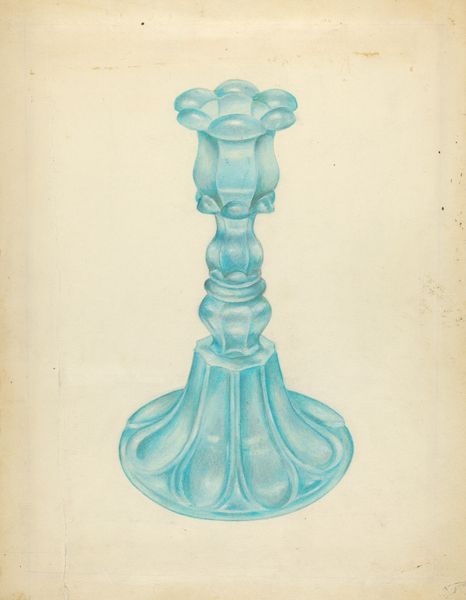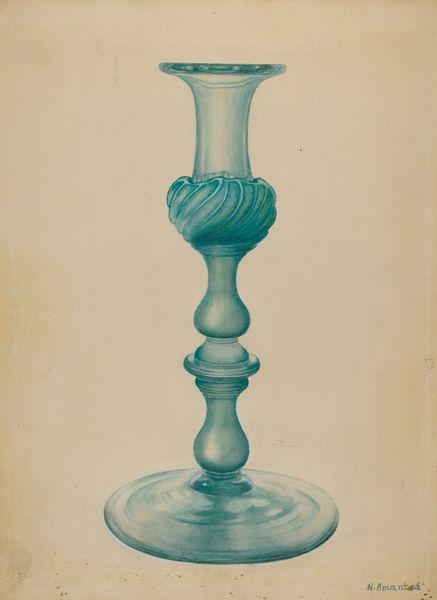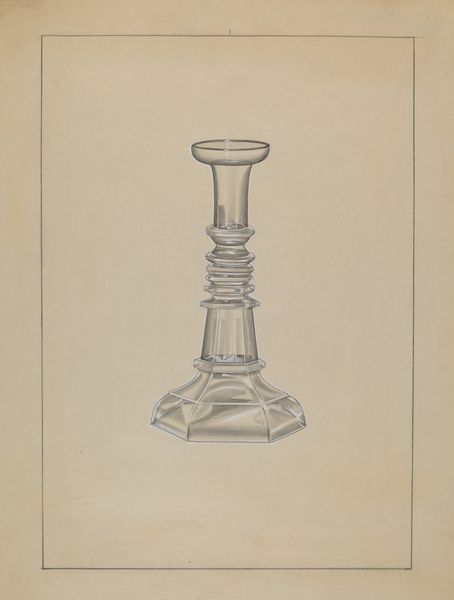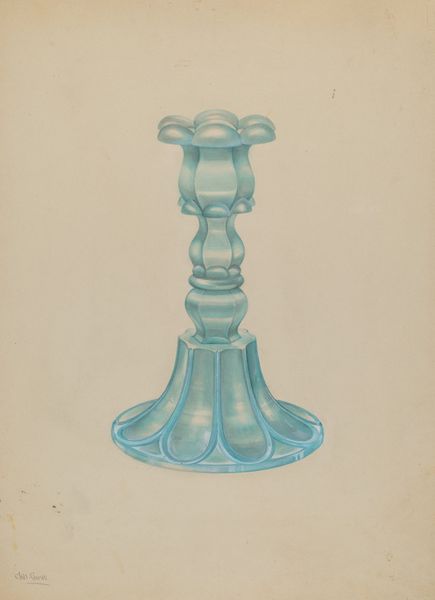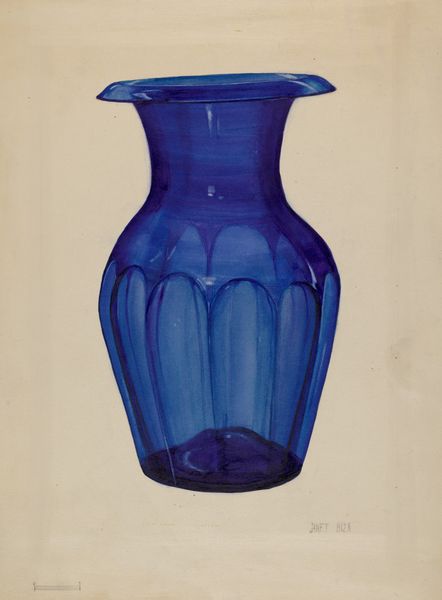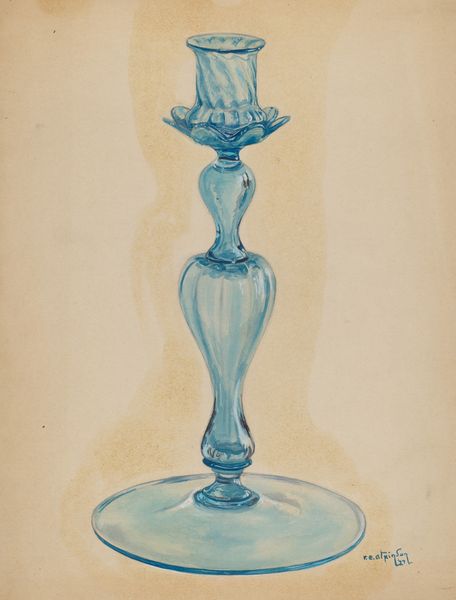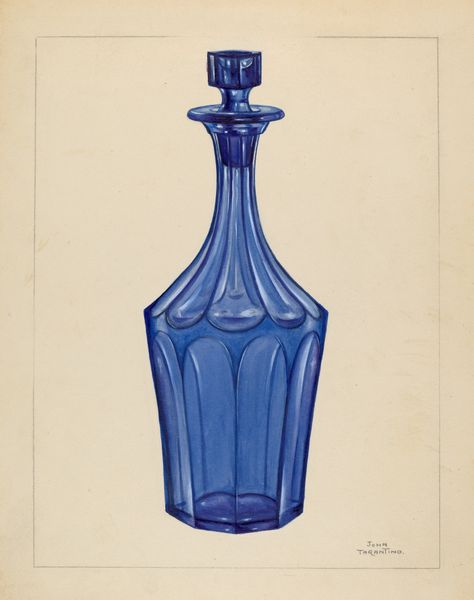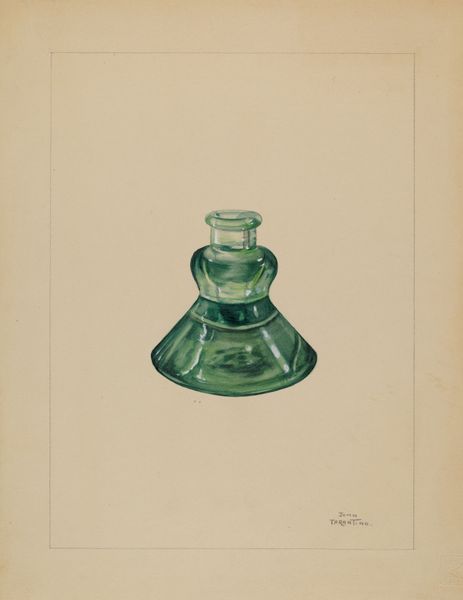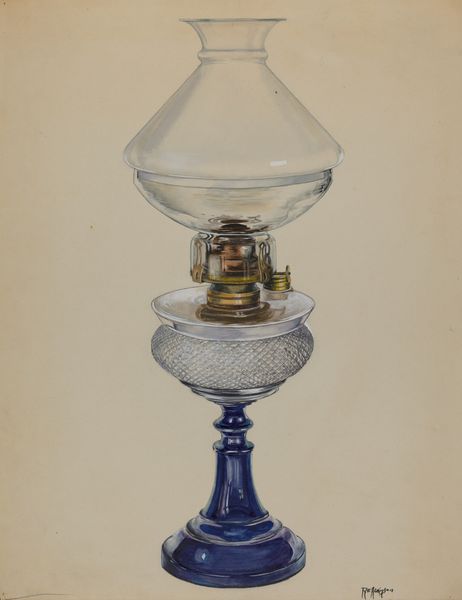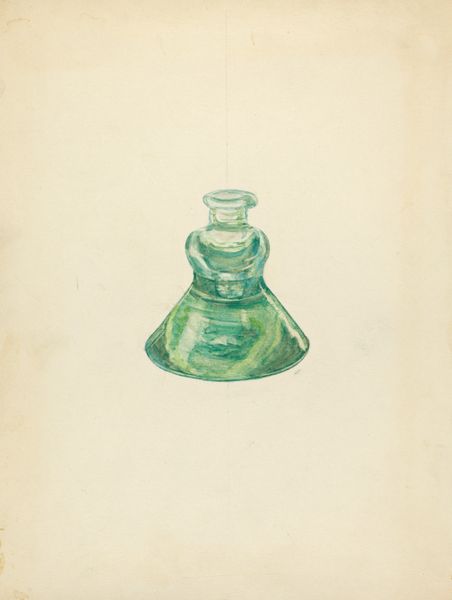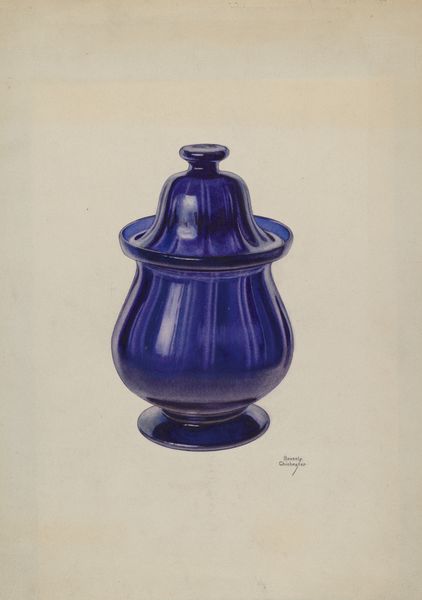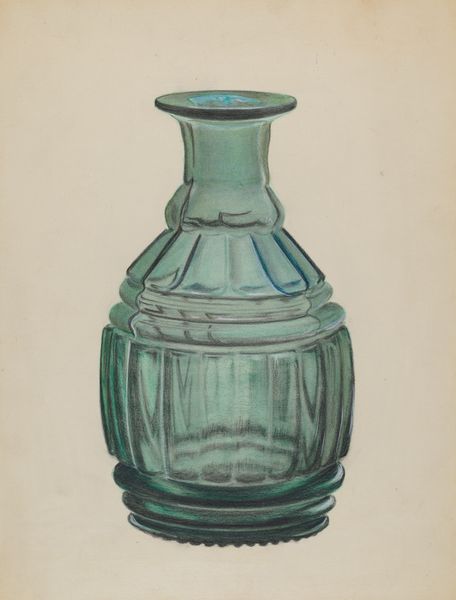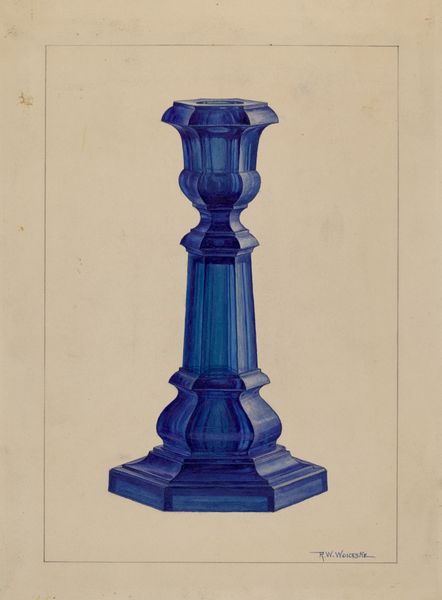
drawing
#
drawing
#
toned paper
#
acrylic
#
white clean appearance
#
possibly oil pastel
#
oil painting
#
acrylic on canvas
#
underpainting
#
pastel chalk drawing
#
watercolour illustration
#
watercolor
Dimensions: overall: 30.3 x 23 cm (11 15/16 x 9 1/16 in.)
Copyright: National Gallery of Art: CC0 1.0
Editor: This is "Glass Candlestick," circa 1936. It appears to be a drawing, perhaps with watercolour. The blue tones give it a slightly melancholic feel, don't you think? How do you interpret this work? Curator: I see more than just a candlestick; I see a meditation on domesticity during a tumultuous period. Consider the date: 1936. The world was on the brink of war, yet here is a rendering of an object of everyday beauty, elevated through art. The use of glass itself is interesting – a fragile material representing stability perhaps, or the illusion of it. Editor: The fragility juxtaposed with the stability…that's a compelling thought. So, is the artist commenting on societal anxieties? Curator: It's quite possible. And, look at the almost architectural rendering of the candlestick base next to the realistic representation, what does that asymmetry say to you? Are we looking at an object that is grounded or floating? Also, consider who was afforded the opportunity to focus on still-life painting at this time. Editor: That's true, art history often overlooks the perspectives of marginalized communities. This artist having the luxury to create it probably comes from a privileged background. The outline almost feels like a critique, like the idea is unfinished or inaccessible, it's definitely thought-provoking. Curator: Exactly! It invites us to question the context and the power dynamics inherent in artistic representation, reminding us that even the simplest still life can carry complex layers of meaning and social commentary. The incomplete diagram also has the potential to symbolize a shattered perspective of domestic ideology for the woman in 1936. Editor: I never would have seen that without your perspective. It shows the value in looking beyond just the aesthetic. Curator: Precisely, that’s where the real engagement begins.
Comments
No comments
Be the first to comment and join the conversation on the ultimate creative platform.

